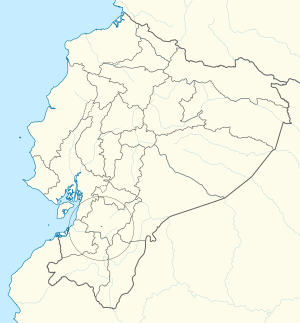Pale-headed brushfinch facts for kids
Quick facts for kids Pale-headed brushfinch |
|
|---|---|
 |
|
| Conservation status | |
| Scientific classification | |
| Genus: |
Atlapetes
|
| Species: |
pallidiceps
|
 |
|
The pale-headed brushfinch (Atlapetes pallidiceps) is a small bird. It belongs to the family Passerellidae, which includes many types of sparrows and buntings. This special bird lives only in a specific part of Ecuador. This means it is endemic to that area.
It lives in dry places with low bushes. These areas are high up in the mountains, between 1,650 and 1,800 meters (about 5,400 to 5,900 feet) above sea level. The pale-headed brushfinch is an endangered bird. Its population is very small.
Contents
About the Pale-Headed Brushfinch
The pale-headed brushfinch gets its name from its light-colored head. It is a type of brushfinch, which are known for living in dense bushes and shrubs. These birds are usually shy. They often stay hidden in their habitat.
Where It Lives
This unique bird lives in south-central Ecuador. Its home is in dry, scrubby areas in the Andes mountains. The total area where it lives is very tiny. Experts estimate it is only about 1 square kilometer (less than half a square mile). This makes its habitat one of the smallest for any bird species.
Why It's Endangered
The pale-headed brushfinch faces two main threats. One big problem is habitat loss. People are changing the land where the birds live. This means there are fewer places for them to find food and build nests.
Another threat comes from a bird called the shiny cowbird. The shiny cowbird is a nest parasite. This means it lays its eggs in the nests of other birds. The cowbird chicks then hatch and often push out the brushfinch chicks. They also compete for food. This makes it hard for the brushfinch to raise its own young.
Helping the Brushfinch
Luckily, people are working to protect the pale-headed brushfinch. After the bird was rediscovered in 1998, the Jocotoco Foundation set up the Yunguilla reserve. Most of the brushfinch's small habitat is inside this reserve.
The foundation does a lot of work to help the birds. This includes removing shiny cowbirds from the area. This "intensive management" helps the brushfinches raise their own chicks. Because of these efforts, the number of pale-headed brushfinches is now growing. However, finding more suitable places for them to live is still a challenge.
See also
 In Spanish: Saltón Cabecipálido para niños
In Spanish: Saltón Cabecipálido para niños


